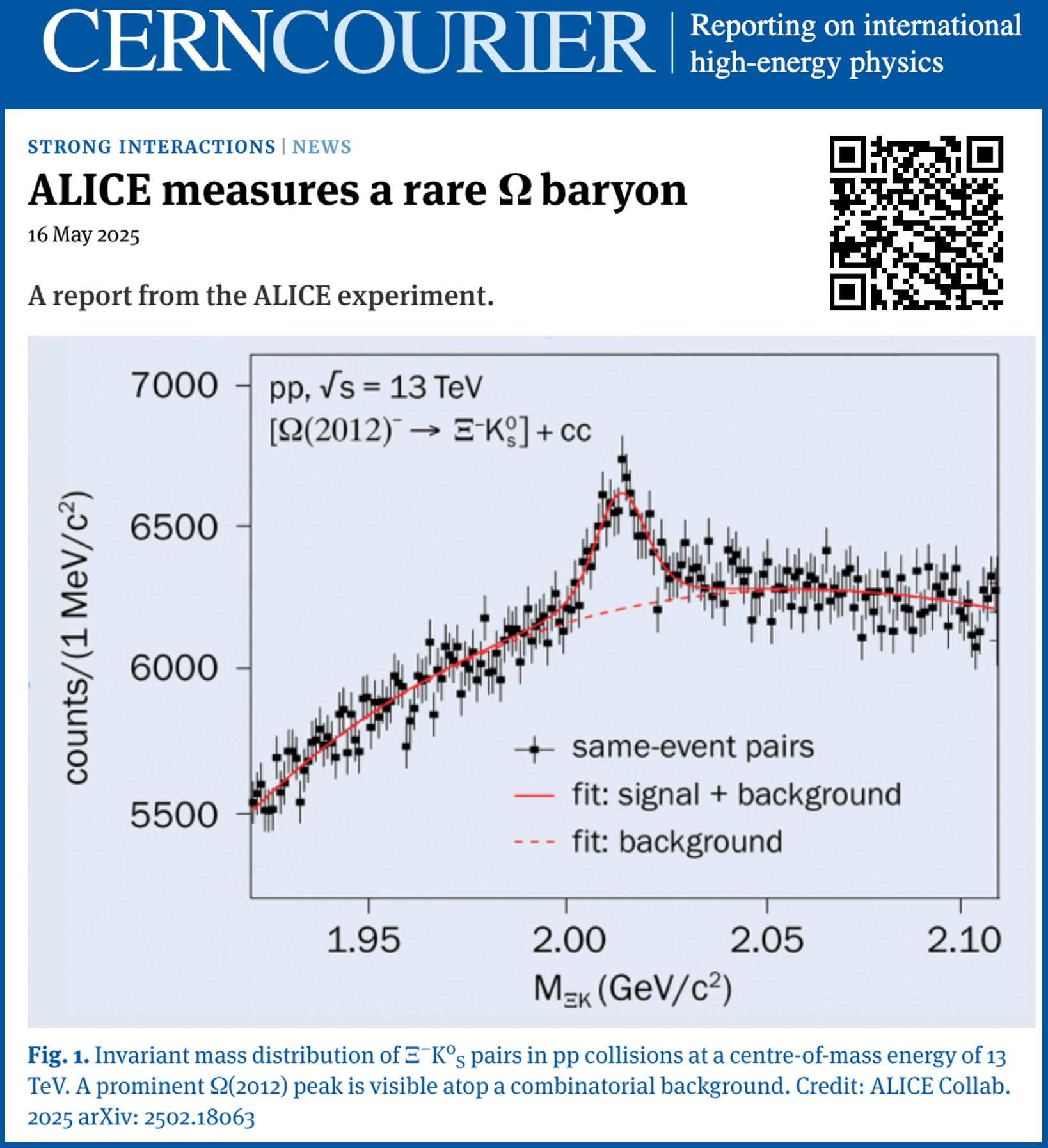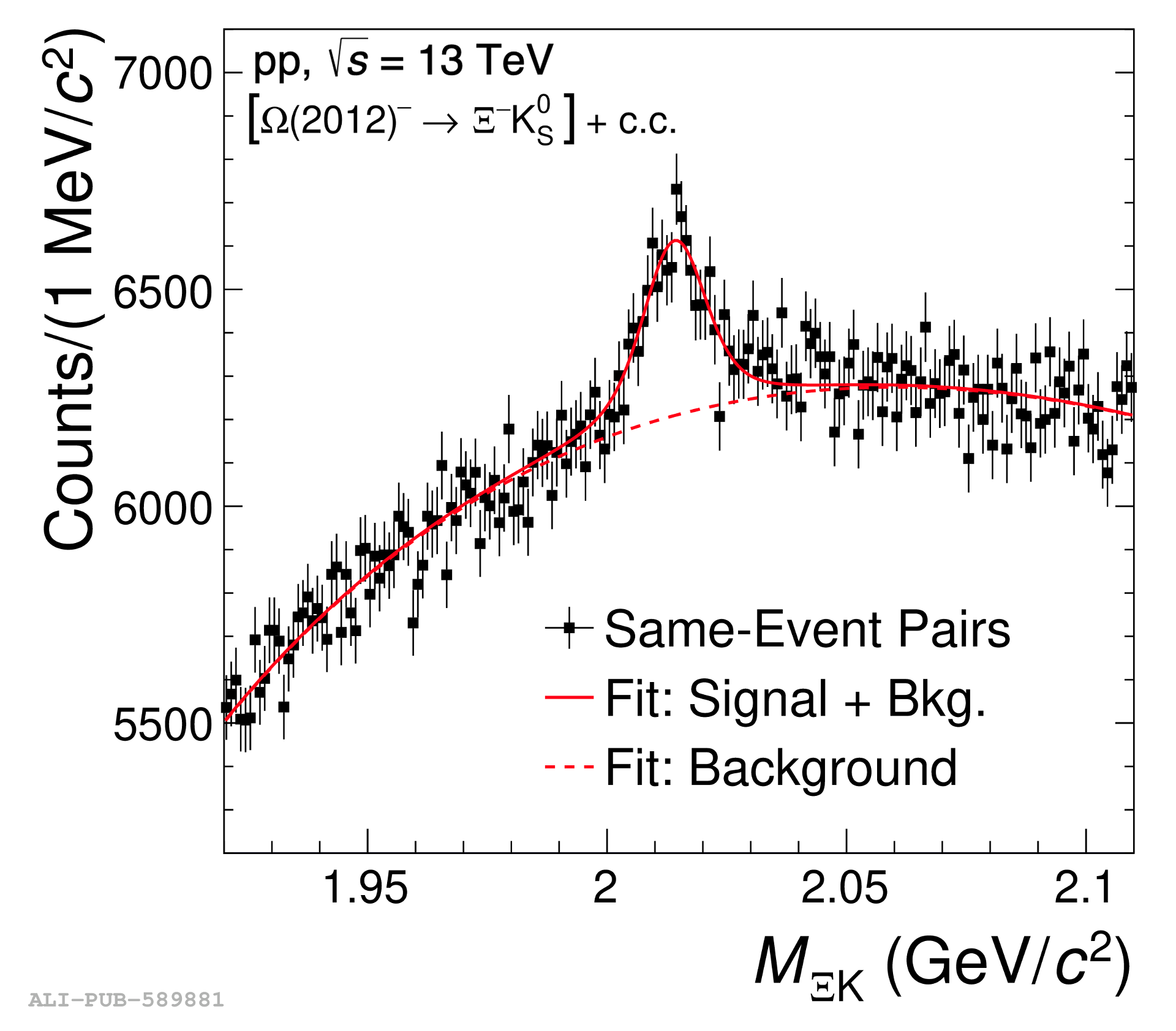
16 May 2025
CERN Courier (May-June 2025) Energy Frontier:
ALICE measures a rare Ω baryon
ALICE Preprint: https://arxiv.org/abs/2502.18063
Since the discovery of the electron and proton over 100 years ago, physicists have observed a “zoo” of different types of particles. While some of these particles have been fundamental, like neutrinos and muons, many are composite hadrons consisting of quarks bound together by the exchange of gluons. Studying the zoo of hadrons – their compositions, masses, lifetimes and decay modes – allows physicists to understand the details of the strong interaction, one of the fundamental forces of nature.
The Ω(2012) was discovered by the Belle Collaboration in 2018. The ALICE collaboration recently released an observation of a signal consistent with it with a significance of 15σ in proton–proton (pp) collisions at a centre-of-mass energy of 13 TeV. This is the first observation of the Ω(2012) by another experiment.
While the details of its internal structure are still up for debate, the Ω(2012) consists, at minimum, of three strange quarks bound together. It is a heavier, excited version of the ground-state Ω baryon discovered in 1964, which also contains three strange quarks. Multiple theoretical models predicted a spectrum of excited Ω baryons, with some calling for a state with a mass around 2 GeV. Following the discovery of the Ω(2012), theoretical work has attempted to describe its internal structure, with hypotheses including a simple three-quark baryon or a hadronic molecule.
Using a sample of a billion pp collisions, ALICE has measured the decay of Ω(2012) baryons to Ξ–K0S pairs. After traveling a few centimetres, these hadrons decay in turn, eventually producing a proton and four charged pions that are tracked by the ALICE detector.
ALICE’s measurements of the mass and width of the Ω(2012) are consistent with Belle’s, and superior precision on the mass. ALICE has also confirmed the rather narrow width of around 6 MeV, which indicates that the Ω(2012) is fairly long-lived for a particle that decays via the strong interaction. Belle and ALICE’s width measurements also lend support to the conclusion that the Ω(2012) has a spin-parity configuration of JP = 3/2–.
ALICE also measured the number of Ω(2012) decays to Ξ–K0S pairs. By comparing this to the total Ω(2012) yield based on statistical thermal model calculations, ALICE has estimated the absolute branching ratio for the Ω(2012) → Ξ–K0 decay. A branching ratio is the probability of decay to a given mode. The ALICE results indicate that Ω(2012) undergoes two-body (ΞK–) decays more than half the time, disfavouring models of the Ω(2012) structure that require large branching ratios for three-body decays.
The present ALICE results will help to improve the theoretical description of the structure of excited baryons. They can also serve as baseline measurements in searches for modifications of Ω-baryon properties in nucleus–nucleus collisions. In the future, Ω(2012) baryons may also serve as new probes to study the strangeness enhancement effect observed in proton–proton and nucleus–nucleus collisions.

Fig. 1. Invariant mass distribution of Ξ–K0S pairs in pp collisions at a centre-of-mass energy of 13 TeV. A prominent Ω(2012) peak is visible atop a combinatorial background.
